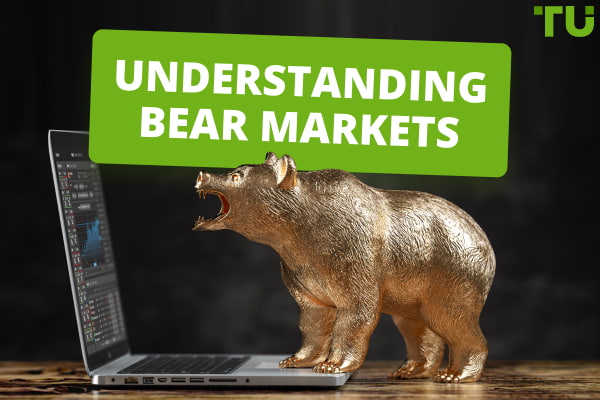Understanding Ranging Markets In Trading
Ranging markets are a type of market characterized by short-term movement between apparent asset price highs and lows.
A ranging market is a type of market that is characterized by a period of price consolidation where the price of a security oscillates between support and resistance levels over an extended period of time. This type of market is typically seen when investors are uncertain and have conflicting opinions about the future direction of the security, causing the security to remain in a trading range. Generally, ranging markets are characterized by low volatility and lack of major price movements.
Investors can take advantage of the lower volatility by using strategies such as scaling in and scaling out, as well as using shorter time frames to enter and exit trades. A good idea is to consider using stop-loss orders to reduce risk. Ultimately, the key to successful trading in a ranging market is to remain patient and use a disciplined approach to identify profitable trades.
Start trading Forex and Stocks now with RoboForex!Top 3 related terms
Stop-loss order is a risk management tool in trading. In a ranging market, it's placed just below support (for long positions) or just above resistance (for short positions) to automatically close a trade if prices breach these levels, limiting potential losses.
Support and resistance levels: support is the lower boundary, and resistance is the upper boundary of a ranging market's price range. They are key levels where prices tend to stall or reverse. Traders use these levels for entry, exit, and setting stop-loss/take-profit orders.
Breakout is a significant price movement in a ranging market that occurs when prices move beyond a support or resistance level. It signals a potential change in market sentiment, often providing trading opportunities as it may indicate the start of a new trend.
Characteristics of a ranging market
Price movements in a sideways market are typically characterized by horizontal price movements, support and resistance levels, and low volatility. Horizontal price movements mean that the market is moving sideways; it is not trending up or down.
Support and resistance levels are prices at which the market has difficulty breaking through and often serves as a reversal point. Low volatility is a measure of how much the market is fluctuating; a low volatility means that the market is not fluctuating much and is less likely to experience large swings.
When investing in a ranging market, understanding the characteristics of the market is vitally important.
-
1
Identify the support and resistance levels in order to take advantage of the trend reversal points.
-
2
Consider the trading volume and look for any signs of increasing or decreasing activity as this may signal a change in the market.
-
3
Traders should also be aware of the low volatility and adjust their trading strategy accordingly.
-
4
Traders should be aware of any news or events that may affect the market as these may cause the market to break out of its current range.
Understanding and taking advantage of these characteristics can help traders to make profitable investments in a ranging market. It is important to remember to use risk management strategies at all times, and to be aware of the potential risks when trading in a ranging market. Additionally, traders should always be aware of any news or events that could affect the market and be prepared to adjust their strategies in order to maintain their profits.
Taking the time to understand the characteristics of a ranging market and using risk management strategies, traders can make successful investments in this type of market.
Identifying a ranging market
Technical analysis tools, such as moving averages and Bollinger Bands, can be used to identify horizontal price movements in the market and recognize a ranging market.
Moving averages can be used to identify a ranging market because they show the average price of a security over a period of time. A ranging market will display as a flat line on the moving average chart. Bollinger Bands can also be used to identify a ranging market as they are bands that are placed two standard deviations away from a simple moving average. When the price of a security moves within the two bands, the market is in a ranging state.
| Tool | Characteristics |
|---|---|
| Assets for copy trading Moving Averages |
Regulator Displays the average price of a security over a period of time |
| Assets for copy trading Bollinger Bands |
Regulator Bands placed two standard deviations away from a moving averag |
The two technical analysis tools described above are just two of the many tools available to traders for recognizing a ranging market. Other tools used to recognize ranging markets include the Relative Strength Index (RSI) and the Average Directional Index (ADX). The RSI looks for trading opportunities based on the overbought or oversold conditions of a security, and the ADX is used to measure the strength of a trend.
Apart from using technical analysis tools, traders can also use price action to identify a ranging market. Price action is the study of a security's price movement and can be used to identify any patterns or trends in the market. If a security's price is staying within a narrow range, then this is an indication that the market is in a ranging state.
Main risks of ranging markets
Analyzing trading opportunities in a sideways market can be difficult and carries certain risks. In a ranging market, the price of an asset can remain within a certain range for a long period of time. It does not show any major trend but only small fluctuations. Generally, ranging markets can be identified when the price of an asset is not trending but oscillates or fluctuates within a certain price range.
While ranging markets can offer traders the opportunity to capitalize on price movement, they also carry certain risks. One of the most significant risks is that of false breakouts. A false breakout occurs when the price of an asset breaks out of the established price range but fails to sustain the breakout and quickly reverts back to its original range. False breakouts can lead to large losses for traders if they are not careful.
Ranging markets can also be prone to market manipulation. Market manipulation involves the use of certain techniques to influence the price of an asset, such as artificially inflating or deflating the price. This is particularly true for newer markets, such as crypto, and is generally easier to do when liquidity is low.
Another risk posed by ranging markets is that of increased volatility. Due to the lack of a major trend, ranging markets can be highly volatile with sudden price movements in either direction. This can make it difficult for traders to accurately predict the direction of the price and can lead to large losses.
Finally, a ranging market can also lead to trader fatigue due to the lack of significant price action. Traders may become impatient with the lack of action and take on more risk in order to increase their chances of making a profit.
In order to mitigate the risks associated with ranging markets, traders should employ proper risk management techniques. This includes setting predetermined stop-loss levels and ensuring that they are adhered to. Of course, traders should also use technical analysis and other indicators to identify potential false breakouts and market manipulation.
Trading strategies for ranging markets
Trading strategies designed to take advantage of sideways market conditions can potentially provide profitable opportunities.
Range-bound trading and mean reversion are two of the most popular strategies for ranging markets. Range-bound trading involves buying and selling within a predefined price range over a period of time. This strategy requires traders to identify the upper and lower boundaries of the range and determine entry and exit points accordingly.
Mean reversion, on the other hand, is based on the assumption that prices will eventually move back to the mean or average price. This strategy involves buying when prices fall below the average and selling when prices reach the average.
Both strategies rely on the premise that prices will remain range-bound for a certain period of time, so traders must be able to identify the range and be able to time their trades accordingly. As always, traders must be prepared to manage risk, as there’s no strategy that can guarantee profits.
For example, range-bound traders must be aware of any sudden price movements outside of the predetermined range and be prepared to exit their trades if necessary. Mean reversion traders must also be prepared to exit their positions if prices diverge too far from the mean.
Overall, trading strategies for ranging markets can provide profitable opportunities, but traders must be aware of the risks involved. They must be able to identify the range, time their trades, and manage their risk. Additionally, traders must remain flexible and be prepared to exit their positions if prices move outside of the expected range.
Following these practices, traders can increase their chances of success in ranging markets.
Best stock brokers 2024
Conclusion
Ranging markets are a common occurrence in trading that can have a significant impact on market participants. The key to successful trading in a ranging market is to understand the characteristics of these markets, identify them accurately, and develop strategies that allow traders to capitalize on the opportunities they present.
While ranging markets are relatively safe compared to trending markets, they also come with their own set of risks. As such, it is important for traders to develop strategies that keep risk to a minimum and ensure a profitable outcome.
Understanding what ranging markets are and how to trade them can help traders to maximize their profits in these markets.
FAQs
Are ranging markets common in trading?
Ranging markets are the opposite of trending markets, and yes, they are fairly common. Unlike trending markets when the price is trending either up or down, a ranging market is a market where the price moves back and forth between a high price level and a low-price level
Can you make a profit in a ranging market?
Yes, although it’s not without its risks. You can profit by opening trades in the expected direction of the price.
How long do ranging markets typically last?
The duration of a ranging market can vary depending on the market sentiments and volatility. It can last anywhere from a few days, to a few weeks, or even longer.
Are there risks associated with trading in a ranging market?
Generally speaking, the biggest risk is the fact that it requires excellent timing, i.e. knowing when and for how long the price of a stock will remain within range. It can also be hard to predict when the price will break out of its range.
Glossary for novice traders
-
1
Copy trading
Copy trading is an investing tactic where traders replicate the trading strategies of more experienced traders, automatically mirroring their trades in their own accounts to potentially achieve similar results.
-
2
Take-Profit
Take-Profit order is a type of trading order that instructs a broker to close a position once the market reaches a specified profit level.
-
3
Day trading
Day trading involves buying and selling financial assets within the same trading day, with the goal of profiting from short-term price fluctuations, and positions are typically not held overnight.
-
4
Bollinger Bands
Bollinger Bands (BBands) are a technical analysis tool that consists of three lines: a middle moving average and two outer bands that are typically set at a standard deviation away from the moving average. These bands help traders visualize potential price volatility and identify overbought or oversold conditions in the market.
-
5
Cryptocurrency
Cryptocurrency is a type of digital or virtual currency that relies on cryptography for security. Unlike traditional currencies issued by governments (fiat currencies), cryptocurrencies operate on decentralized networks, typically based on blockchain technology.
Team that worked on the article
Vuk stands at the forefront of financial journalism, blending over six years of crypto investing experience with profound insights gained from navigating two bull/bear cycles. A dedicated content writer, Vuk has contributed to a myriad of publications and projects. His journey from an English language graduate to a sought-after voice in finance reflects his passion for demystifying complex financial concepts, making him a helpful guide for both newcomers and seasoned investors.
Dr. BJ Johnson is a PhD in English Language and an editor with over 15 years of experience. He earned his degree in English Language in the U.S and the UK. In 2020, Dr. Johnson joined the Traders Union team. Since then, he has created over 100 exclusive articles and edited over 300 articles of other authors.
Mirjan Hipolito is a journalist and news editor at Traders Union. She is an expert crypto writer with five years of experience in the financial markets. Her specialties are daily market news, price predictions, and Initial Coin Offerings (ICO).










